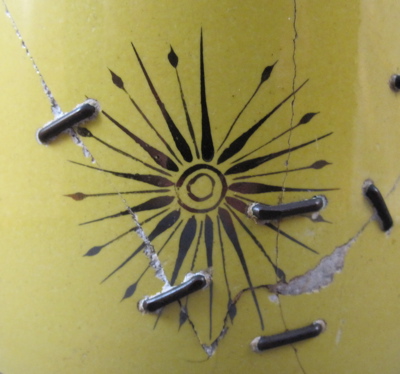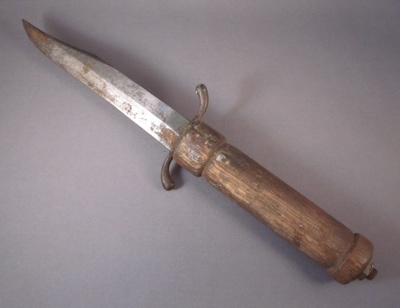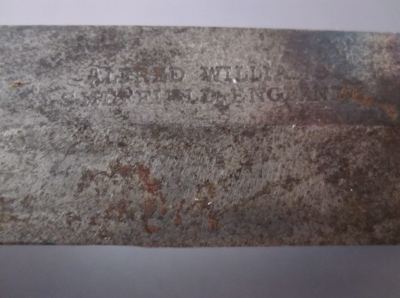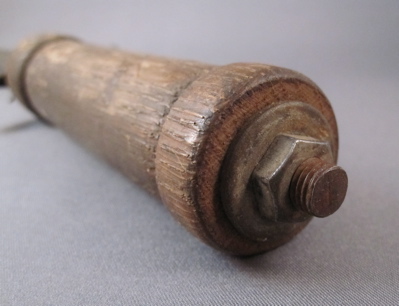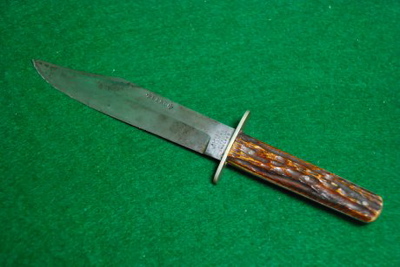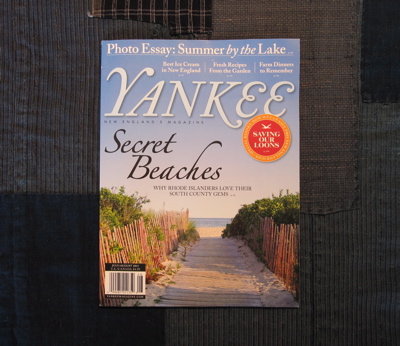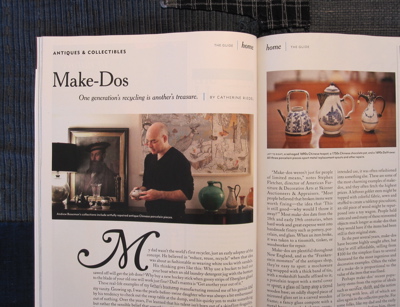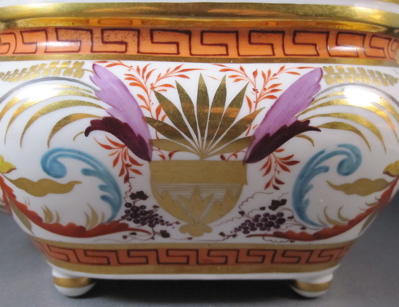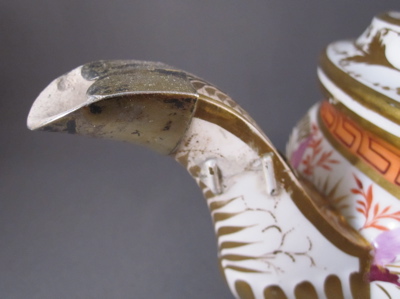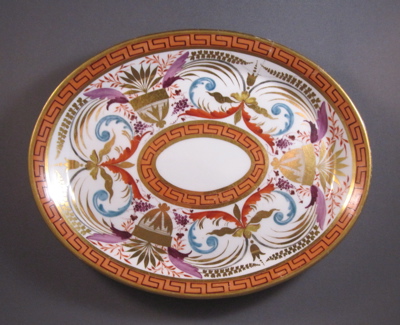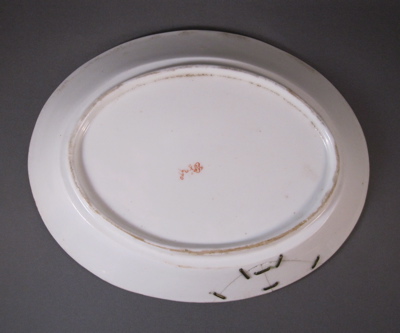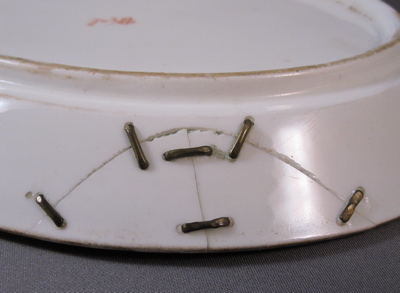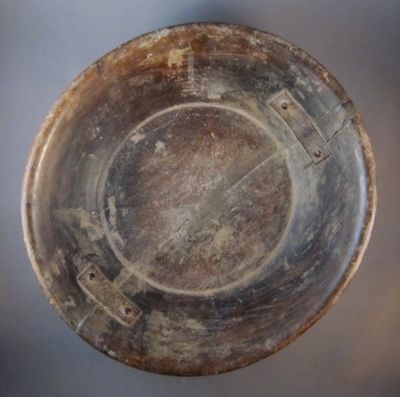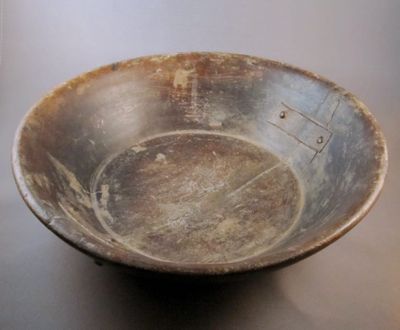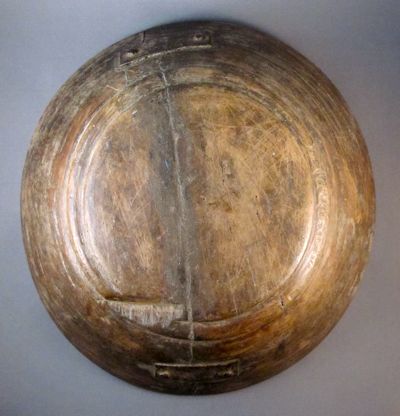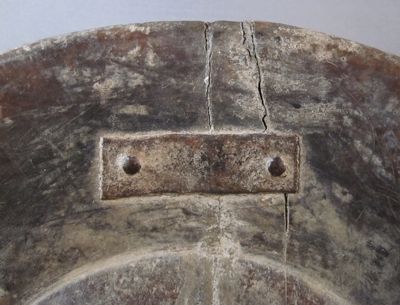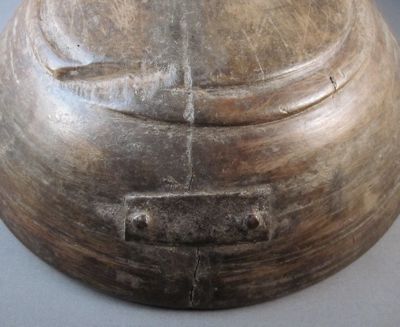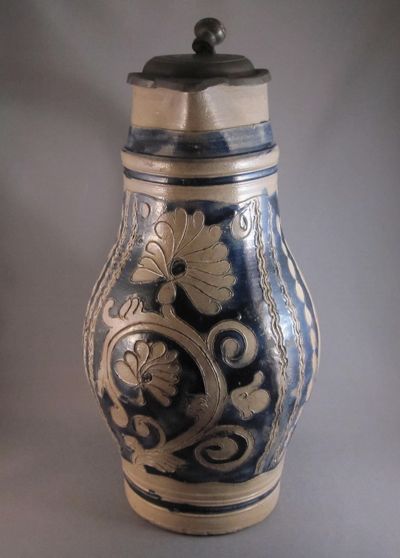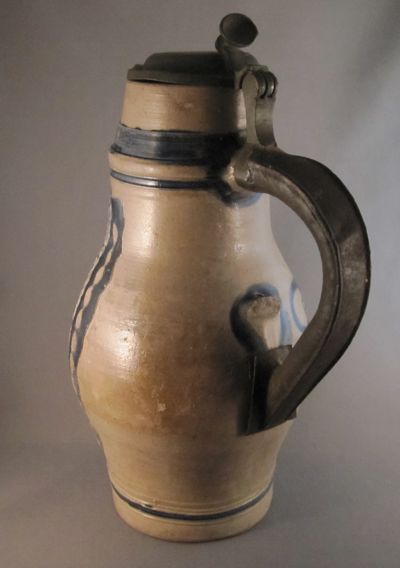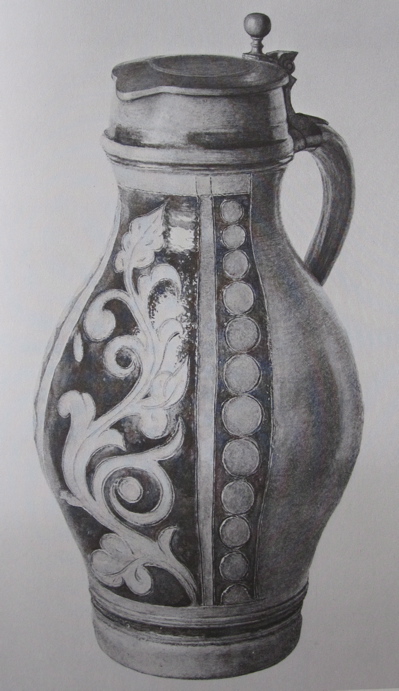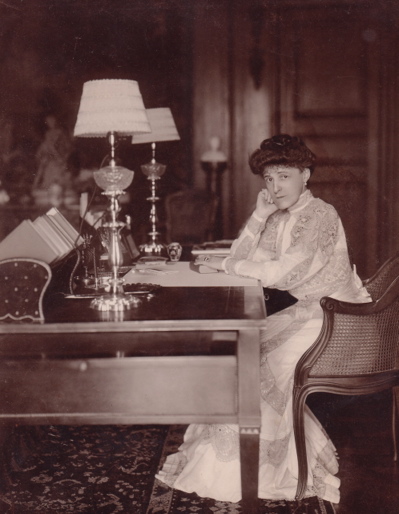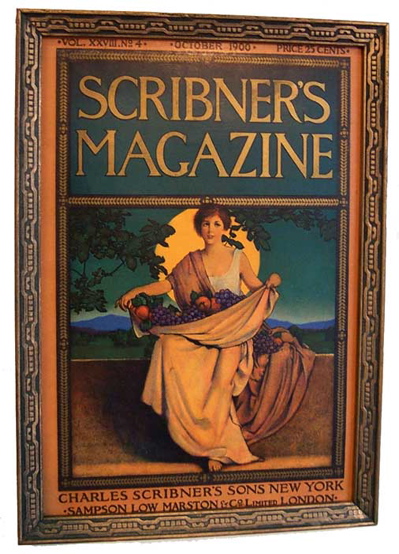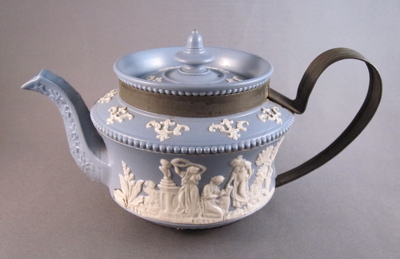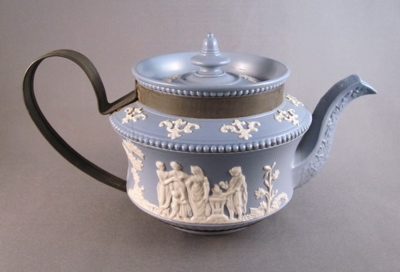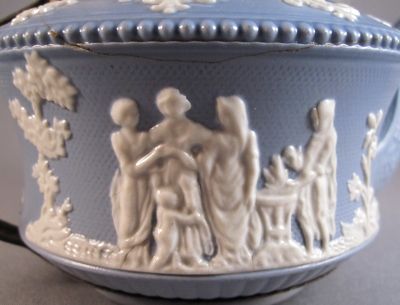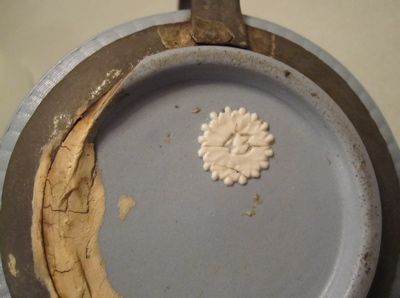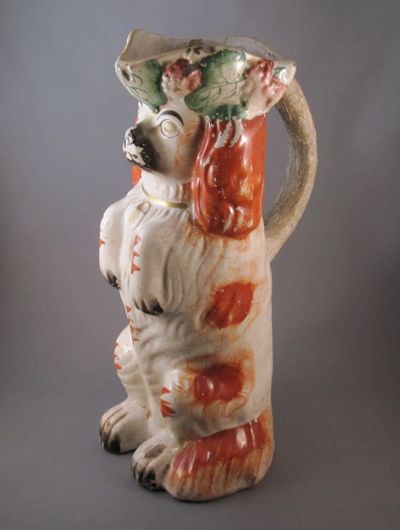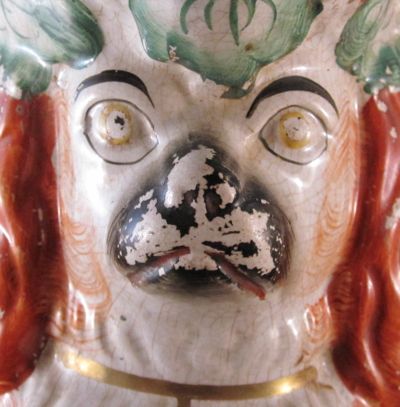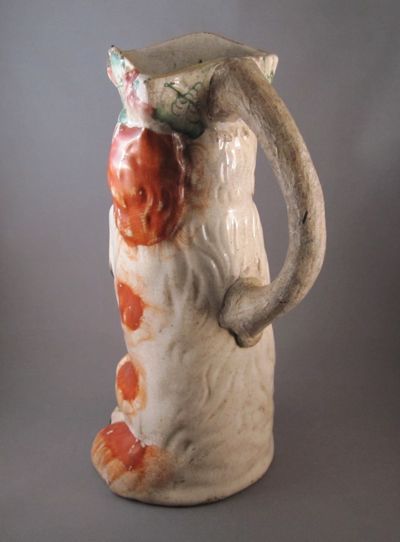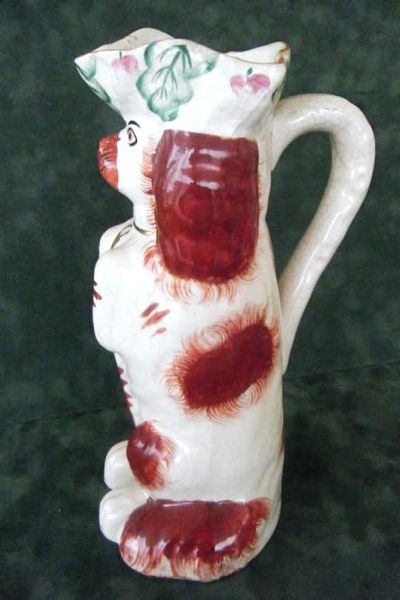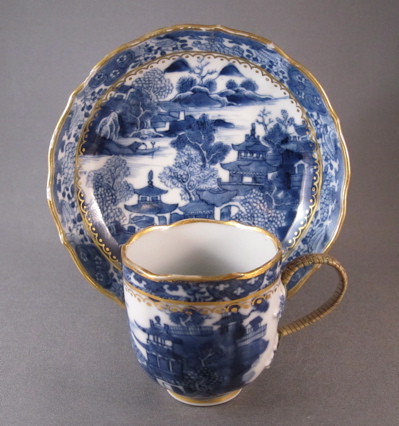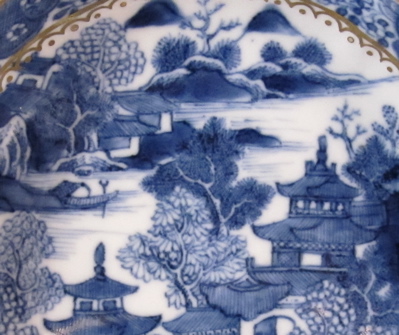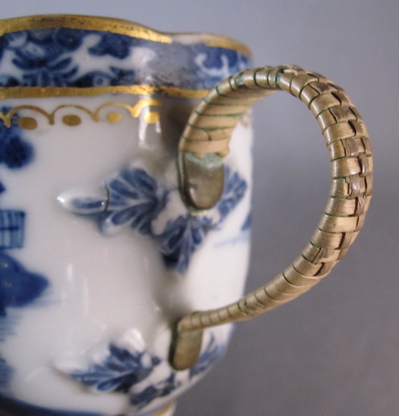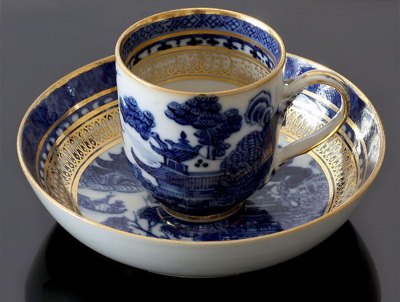This canary yellow pottery mug with silver lustre bands and decoration was made in England in the early 19th century. I recently purchased it from a dealer in the UK who used the “tankard” as his pencil cup. He wrote me “(It) sits on my desk. Only dealers appreciate it! My customers think I am crazy”. I, of course, do not think he’s crazy and it’s too bad his customers did not appreciate it, nor see the beauty in the patterns made by the multiple repairs. It did take a little bit of convincing for the dealer to agree to sell it to me and after I told him “please consider how happy the mug will be living in America with other wounded survivors!”, we agreed on a fair price. I sent payment, the mug arrived 2 weeks later and it has become my new favorite piece!
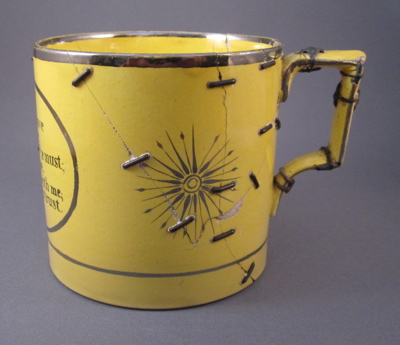
Measures 3-1/2″ tall, 3-5/8″ diameter.
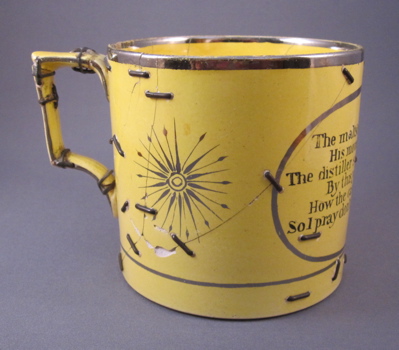
Every angle reveals more and more staples…
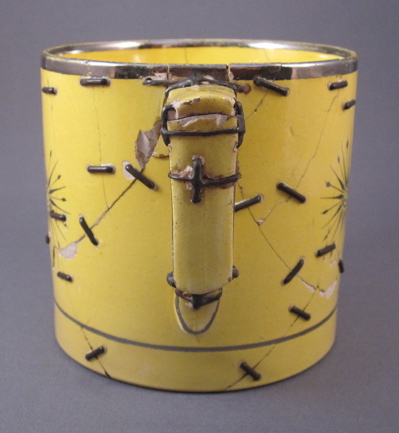
Comical poem printed on the front reads:
“The maltster doth crave
His money to have,
The distiller says have it he must;
By this you may see,
How the case stands with me;
So I pray don’t ask me to trust”

After this mug was smashed, the body was held together with the aid of 40 metal staples of varying size and the handle was repaired with 6 metal bands. It must have been truly cherished by whoever had it repaired.
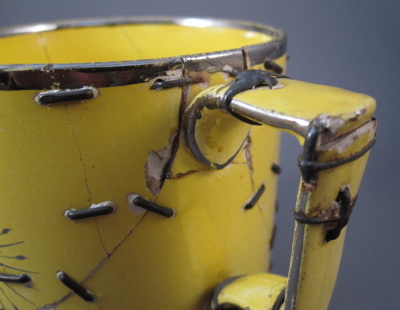
I love the stylized sunbursts, enhanced by the addition of metal staples, on both sides of the mug.
